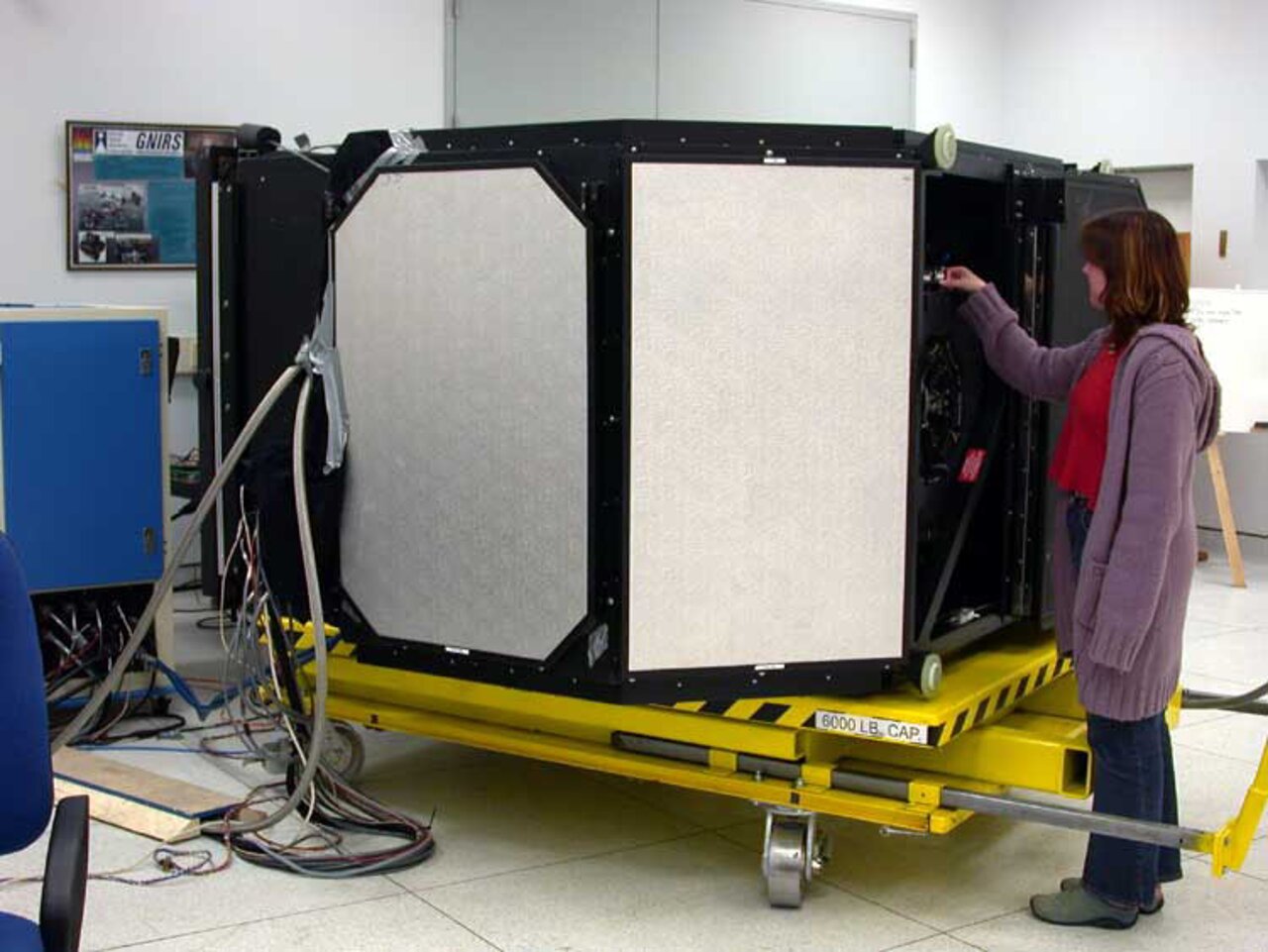Gemini North & South Receive New Instruments for the Holidays!
December 18, 2002

The Gemini Multi-Object Spectrograph (GMOS) at Gemini South
Gemini South took delivery of GMOS-S in November 2002 and is preparing to install it on the telescope for commissioning very early in 2003. It is anticipated that GMOS-S will be available during semester 2003B in both imaging and several spectroscopic modes.
Like its twin that began observations in 2001 on Gemini North, GMOS-S was built as a collaboration between Canada (HIA), and the UK (Astronomical Technology Centre at ROE and University of Durham). The GMOS detector system was provided by the US (National Optical Astronomy Observatory). The two GMOSs are the primary instruments for optical (0.36-1.10 µm) slit/multi-slit/integral field spectroscopy as well as imaging (5.5 arcmin field of view) on the Gemini telescopes.
Michelle at Gemini North
The facility mid-infrared imager and spectrometer Michelle arrived at Gemini North in the first week of December, however, Michelle did not arrive from the institution where it was built (the Astronomy Technology Center at the Royal Observatory of Edinburgh). Rather, it arrived from the United Kingdom Infrared Telescope (UKIRT) just 'two domes down' on the Mauna Kea summit ridge! Gemini and UKIRT have an agreement that will allow Michelle to be shared between the two telescope facilities over the course of its lifetime.
Michelle brings a new and unique capability to the suite of instruments in the Gemini North arsenal. Operating at the mid-infrared wavelengths of 5 to 30 microns, Michelle will acquire both images and spectra of celestial sources. With a start-of-the-art 320x240 BIB detector as its 'eyes' Michelle will image the skies with 0.1" pixels through a complement of ten filters that span the 10 and 20 micron atmospheric windows. Michelle will also produce spectra with resolutions ranging from 200 to 30,000 using 5 different gratings.
Michelle is currently undergoing a period of engineering and characterization in the Gemini North pier lab. Testing of the Gemini cryogenic systems and further testing and optimization of the newly installed detector will proceed over the holidays. Michelle is scheduled for first scientific use late in the 2003A semester, in imaging mode only.



